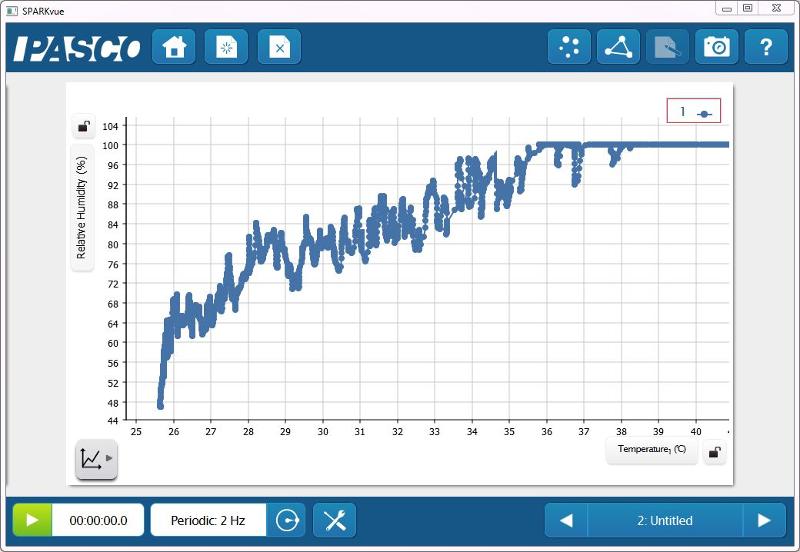Vapor Pressure and Humidity
Equilibrium and vapor pressure can be difficult concepts for students to visualize and grasp. Luckily, most students will be familiar with humidity. By using humidity, you can introduce equilibrium and vapor pressure in terms that are familiar and understandable.
Exploration of Vapor Pressure
The Humidity/Temp/Dew Point Sensor provides a great set of measurements to explore the vapor pressure of water. Hold the Humidity/Temp/Dew Point Sensor over a beaker of water so the temperature and the absolute humidity can be measured. As the water is heated, the humidity increases.


What is Vapor Pressure?
Based on the their own experiences and the demonstration, your students should understand that the humidity is increasing because there are more water molecules in the area around the sensor. What is vapor pressure and how is it related to humidity?
Humidity is an expression of the amount of water vapor in the air. At a given temperature, some amount of the liquid water will turn into a gas (vaporization). Conversely, some amount of gas will turn back into liquid (condensation). If the rates of vaporization and condensation are equal, then an equilibrium is established. The pressure of the gas at this equilibrium is called the vapor pressure. Just like absolute humidity, vapor pressure is temperature-dependent.
The relationship between absolute humidity (in g/m3) and vapor pressure (in kPa) at a given temperature (in oC) can be expressed as:


Visualizing Vapor Pressure
Now that some general relationships are established between absolute humidity, vapor pressure, and temperature, these relationships need to be addressed from a molecular perspective. Odyssey software is a powerful tool for visualizing molecular phenomena.

In this visualization, many important concepts are addressed:
- Molecules with the highest energy (red) are the most likely to be a vapor.
- Molecules with low energy are held together as in a liquid.
- Gas molecules exert a pressure on the walls of the container through collisions.
What About Weather?
When students hear about humidity on the news, the meteorologists express the humidity as a percent. This is the relative, not absolute, humidity. The relative humidity is the ratio of the amount of water in the air relative to the amount of water that could be in the air at a given temperature. The term 100% humidity means that all the water vapor that could be in the air, is in the air.

The relative humidity can only go up to 100%, meaning the air is completely saturated.



